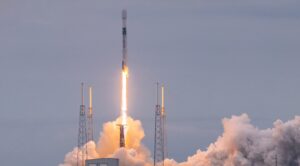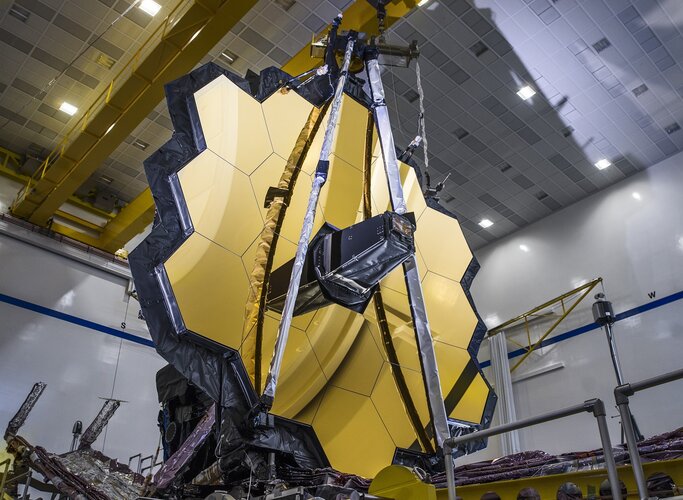Jacobs Awarded $3.9B Engineering and Science Contract at NASA
Sunday, 10 July 2022 12:42 Jacobs (NYSE:J) was awarded the JSC Engineering, Technology, and Science (JETS) II contract at NASA Johnson Space Center in Houston, Texas.
Jacobs is scheduled to begin contract transition on Aug. 1 to continue providing engineering and scientific products and technical services for NASA at Johnson Space Center (JSC). The contract maximum value is estimated at approximately $3.9 billion ov
Jacobs (NYSE:J) was awarded the JSC Engineering, Technology, and Science (JETS) II contract at NASA Johnson Space Center in Houston, Texas.
Jacobs is scheduled to begin contract transition on Aug. 1 to continue providing engineering and scientific products and technical services for NASA at Johnson Space Center (JSC). The contract maximum value is estimated at approximately $3.9 billion ov Experts find way to make better use of lunar samples
Sunday, 10 July 2022 12:42 Though China now has more than 1.7 kilograms of lunar soil gathered from its historic Chang'e 5 mission, the government practices a prudent policy when it comes to distributing these valuable samples to researchers.
Professor Wang Zaicong, a senior researcher at the School of Earth Sciences of the China University of Geosciences in Wuhan, Hubei province, said his team received 200 milligra
Though China now has more than 1.7 kilograms of lunar soil gathered from its historic Chang'e 5 mission, the government practices a prudent policy when it comes to distributing these valuable samples to researchers.
Professor Wang Zaicong, a senior researcher at the School of Earth Sciences of the China University of Geosciences in Wuhan, Hubei province, said his team received 200 milligra Can China claim ownership rights on the Moon
Sunday, 10 July 2022 12:42 NASA Administrator Bill Nelson recently expressed concerns over China's aims in space, and in particular, that China would, in some way, claim ownership over the Moon and stop other countries from exploring it. In an interview with a German newspaper, Nelson cautioned, "We must be very concerned that China is landing on the Moon and saying: 'It's ours now and you stay out.'" China immediately de
NASA Administrator Bill Nelson recently expressed concerns over China's aims in space, and in particular, that China would, in some way, claim ownership over the Moon and stop other countries from exploring it. In an interview with a German newspaper, Nelson cautioned, "We must be very concerned that China is landing on the Moon and saying: 'It's ours now and you stay out.'" China immediately de SpaceX launches $5K monthly Starlink internet service for yachts, oil rigs
Sunday, 10 July 2022 12:42 Elon Musk's SpaceX has announced its new Starlink Maritime service to provide satellite internet to yachts and oil rigs for $5,000 per month.
Starlink Maritime on its website advertises low-latency connection with download speeds of up to 350 megabytes-per-second while at sea, boasting that users can "connect from the most remote waters in the world."
The company said that the Starli
Elon Musk's SpaceX has announced its new Starlink Maritime service to provide satellite internet to yachts and oil rigs for $5,000 per month.
Starlink Maritime on its website advertises low-latency connection with download speeds of up to 350 megabytes-per-second while at sea, boasting that users can "connect from the most remote waters in the world."
The company said that the Starli Terran Orbital completes CAPSTONE's First TCM Burn
Sunday, 10 July 2022 12:42 Terran Orbital Corporation (NYSE: LLAP), a global leader in satellite solutions, primarily serving the United States and Allied aerospace and defense industries, has announced the successful completion of CAPSTONE's first TCM burn (TCM-1). As the first statistical maneuver of the mission, TCM-1 is designed to clean up expected dispersions from the launch vehicle injection - enabling CAPSTONE to
Terran Orbital Corporation (NYSE: LLAP), a global leader in satellite solutions, primarily serving the United States and Allied aerospace and defense industries, has announced the successful completion of CAPSTONE's first TCM burn (TCM-1). As the first statistical maneuver of the mission, TCM-1 is designed to clean up expected dispersions from the launch vehicle injection - enabling CAPSTONE to Building blocks for RNA-based life abound at center of our galaxy
Sunday, 10 July 2022 12:42 Nitriles, a class of organic molecules with a cyano group, that is, a carbon atom bound with a triple unsaturated bond to a nitrogen atom, are typically toxic. But paradoxically, they are also a key precursor for molecules essential for life, such as ribonucleotides, composed of the nucleobases or 'letters' A, U, C, and G joined to a ribose and phosphate group, which together make up RNA. Now, a
Nitriles, a class of organic molecules with a cyano group, that is, a carbon atom bound with a triple unsaturated bond to a nitrogen atom, are typically toxic. But paradoxically, they are also a key precursor for molecules essential for life, such as ribonucleotides, composed of the nucleobases or 'letters' A, U, C, and G joined to a ribose and phosphate group, which together make up RNA. Now, a Web archive with astronomical photographic plates goes online
Sunday, 10 July 2022 12:42 Lots of little dots with no apparent pattern: where laypeople may just see milky gray photos sprinkled with what looks like random crumbs, it is enough to make astronomers' hearts miss a beat. We are talking about historical photographic plates showing negatives of the night sky.
Together with the Leibniz Institute for Astrophysics Potsdam and the universities of Hamburg and Tartu (Estonia
Lots of little dots with no apparent pattern: where laypeople may just see milky gray photos sprinkled with what looks like random crumbs, it is enough to make astronomers' hearts miss a beat. We are talking about historical photographic plates showing negatives of the night sky.
Together with the Leibniz Institute for Astrophysics Potsdam and the universities of Hamburg and Tartu (Estonia Chinese, Australian astronomers detect key process of binary evolution
Sunday, 10 July 2022 12:42 A joint research team of Chinese and Australian astronomers has detected a binary star system ejecting a common envelope, a key process of the binary star evolution, which could be of great importance to studies of the expansion of the universe and dark energy.
This is the first time that scientists have observed direct evidence of the key process of the evolution of the common envelope of
A joint research team of Chinese and Australian astronomers has detected a binary star system ejecting a common envelope, a key process of the binary star evolution, which could be of great importance to studies of the expansion of the universe and dark energy.
This is the first time that scientists have observed direct evidence of the key process of the evolution of the common envelope of Northrop Grumman gets $22 million Space Force contract to build small-satellite carrier bus
Saturday, 09 July 2022 16:50
Northrop Grumman won a sole-source award for a satellite called ROOSTER, short for Rapid On-orbit Space Technology Evaluation Ring
The post Northrop Grumman gets $22 million Space Force contract to build small-satellite carrier bus appeared first on SpaceNews.
Second commercial Lynk Global satellite still looking for launch
Friday, 08 July 2022 19:33
Lynk Global said it is still waiting for Spaceflight to rebook a flight for the second commercial satellite in its cellphone-compatible broadband network, four months after the launch services provider’s space tug was kicked off a SpaceX mission.
Cosmic targets for Webb Telescope’s first images announced
Friday, 08 July 2022 13:00
The NASA/ESA/CSA James Webb Space Telescope will soon reveal unprecedented and detailed views of the Universe, with the upcoming release of its first full-colour images and spectroscopic data.
Three of the four instruments on NASA's Webb telescope ready for science
Friday, 08 July 2022 12:25
NASA mirrors on ESA pathfinder to enhance lunar navigation
Friday, 08 July 2022 12:23
NASA will supply the upcoming European Space Agency (ESA) Lunar Pathfinder satellite with an array of laser retroreflectors, mirrored devices that reflect light back at its source. The retroreflectors will validate navigation capabilities that will be critical to the Artemis missions and future lunar exploration.
Week in images: 04-08 July 2022
Friday, 08 July 2022 12:10
Week in images: 04-08 July 2022
Discover our week through the lens
A four-stroke engine for atoms
Friday, 08 July 2022 10:53 If you switch a bit in the memory of a computer and then switch it back again, you have restored the original state. There are only two states that can be called "0 and 1".
However, an amazing effect has now been discovered at TU Wien (Vienna): In a crystal based on oxides of gadolinium and manganese, an atomic switch was found that has to be switched back and forth not just once, but twic
If you switch a bit in the memory of a computer and then switch it back again, you have restored the original state. There are only two states that can be called "0 and 1".
However, an amazing effect has now been discovered at TU Wien (Vienna): In a crystal based on oxides of gadolinium and manganese, an atomic switch was found that has to be switched back and forth not just once, but twic 
